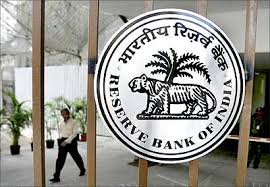This involves converting the stream of future income from an asset (such
as interest payments on a bank loan) into securities that the bank can sell.
Several types of securitization have been carried out by banks, but the dominant form at the start of this century has been securities created as
Collateralized Mortgage Obligations (CMOs). These had existed since the early
The 1980s, but after the 1990s the value of CMOs created and sold by banks rose
fast.
Collateralized Mortgage Obligations and similar securities have a particular
the feature whose refinement permitted that growth. They divide the income
streams from the pools of mortgages which back them into different slices or
tranches, each of which carries different degrees of risk The highest tranches
have a legal status which enables the holder to bear very low risk; even
though the underlying pool of mortgages may carry a high credit risk, in
the case of default the holders of the most senior tranche have a secure, priority
claim on the stream. If, for example, homeowners default on the mortgages
that is the collateral for the bonds, the lower tranches of bonds lose value
first, while the highest tranches only bear losses if the total default is greater
then the value of the lower tranches of bonds issued. In other words, the
lowest tranche has no more claim than an equity holder in a company has on
a bankrupt company’s assets; their claim is only against the residual income
stream from the pooled mortgages after higher-tranche security holders
have been paid.
Higher tranches could be sold by banks to other banks and to investment
funds, which required low-risk assets. Even if the mortgages pooled as
backing for a CMO was mortgages owed by high-risk home buyers – subprime mortgages – the highest tranche of the securities created was given
the highest credit rating, Aaa, by credit rating agencies and in that way
became eligible for purchase by risk-averse investment institutions. The
the crisis has demonstrated that even if such risk transformation was feasible for
an individual security or bank, it could actually increase the riskiness of the
banking system as a whole and the apparent security offered to investors by
the highest tranches were not sound.
From the point of view of the originating bank, securitization transformed
the role of risk management. Instead of giving a loan and holding it to
maturity, with the risk of the debtor defaulting and other risks (including
the risk of full repayment too early), the bank would securitize the assets
and sell the security. The important point is that by securitizing loans an
individual bank could sell the risks involved in the underlying loan (although, as the 2007-09 crisis revealed, the risks to the financial system as a
whole might rebind on the individual bank). As a result, banks had less
incentive to try to minimize the risk of assets. To put it another way, they
believed their asset management could permit the origination of more risky
loans for, having sold the risk on instead of holding it, they were not obliged
to increase their capital. If they had not sold the risk by securitization they
would have had to increase their capital in proportion to the (risk-weighted)
loan.
Click here for government certification in Accounting, Banking & Finance





9 Comments. Leave new
Very relevant Information. .good job!
Good…!
Nice 🙂
Nice article
thanks to all
Elaboration is fine.
Explanation is good!
Awesome work 😀
Keep it up 😀
great…